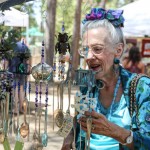
Volunteers with the Scouts West 4x4 Club spent a weekend recently blocking an unauthorized road leading into the Santa Rosa Wilderness above Palm Desert.
Scouts West members felt that stepping up to help do what is right is part of being responsible recreational users on the national forest. During the course of the weekend, the volunteers installed barriers and signs to help keep motorized vehicles on the open routes and protect the Santa Rosa Wilderness.
The volunteers with Scouts West San Diego Chapter are members of the forest’s Adopt-A-Trail Program and the group has adopted the 11-mile Santa Rosa Truck Trail located above Palm Desert on Highway 74. The road rises from 4,500 to 8,100 feet in elevation offering majestic views into the Coachella Valley.
During the project, San Jacinto Recreation Officer John Ladley assisted and guided the volunteers as they built fence and moved rocks. “We really appreciate their effort and hard work, it helps protect the wilderness,” said Ladley. “Motorized equipment and vehicles are not permitted in a federal wilderness unless authorized for an emergency such as fire or rescue,” Ladley noted.
The Forest Service portion of the 72,000-acre Santa Rosa Wilderness was established by the U.S. Congress as wilderness in 1984 with the passage of the California Wilderness Act. The Bureau of Land Management portion was established in 1994 through the California Desert Protection Act. The area became part of the Santa Rosa San Jacinto Mountains National Monument in 2000, and is now jointly managed by the both the USFS and BLM.
In 2014, the nation will celebrate “50 Years of Wilderness.” On Sept. 3, 1964, President Lyndon B. Johnson signed into law the Wilderness Act. The act defines “wilderness” as areas where the earth and its communities of life are left unchanged by people, where the primary forces of nature are in control and where people themselves are visitors who do not remain.
Off-Highway Vehicle clubs and organizations in partnership with the San Bernardino National Forest adopt trails and routes, and the groups provide maintenance to sustain recreational use by the public throughout the operating season. Local ranger districts decide which trails or routes should be adopted and the Adopt-A-Trail coordinator makes the route assignments based on the groups’ requests and trail needs. Each trail is different.













